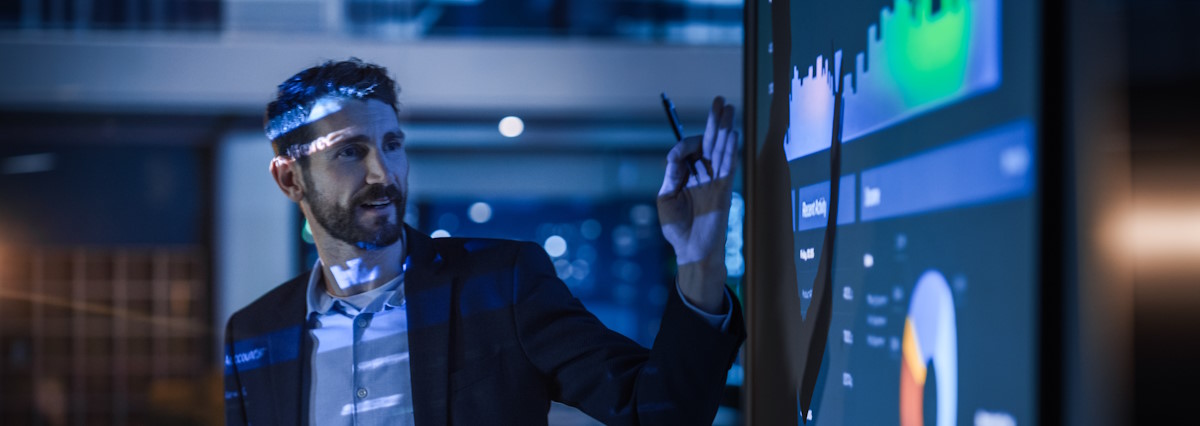Say you go to your bank and ask for a personal loan. The first thing they’ll do is ask you for all the necessary documents to get a complete picture of your financial situation. They’ll then complete an assessment based on the documents provided, and (hopefully) offer a loan with terms according to your financial shape. In trade credit insurance, it works in much the same way. However, as we have to collect information on our clients’ clients (also called buyers), the task requires complex knowledge and skill sets, and vast amounts of data. Allianz Trade’s local approach enables us to collect more – and more accurate – data. Around the world, we have 550 credit analysts gathering and interpreting information. Their analysis enables our 430 underwriters to make the best possible decisions regarding credit limit requests and coverage to help businesses grow with confidence.
Keeping an ear to the ground
The credit assessment process begins with collecting financial, commercial and strategic data on the company. This information is either publicly available – in countries where businesses have to issue statements – or directly shared by companies when approached by our credit analysts. We then complete the picture using a wealth of supporting information and expertise.
A key challenge for our analysts is to collect company-specific information, such as the value and volume of sales and whether they’ve defaulted on payments. We also work with external data providers to obtain the latest information on the 83 million companies in our database.
When assessing credit risk, our credit analysts leverage their local knowledge – which is indispensable to making informed decisions on risk. This means spending time in the field to understand the specific market dynamics of a specific region, then taking them into consideration alongside factors such as climate and macro-economics.
Analysts are also in regular contact with business leaders and corporate finance executives – and this is where soft skills and relationship-building are essential when asking buyers for financial information. A purely statistical vision of a company’s financial health can only tell you so much. We spend time with buyers to understand their environment, the way their work, their outlooks and the challenges they might face. That way, we have a fresh and dynamic vision of each company’s solvency so we can provide our clients a tailored approach to credit risk coverage.
The balancing act
As I mentioned earlier, soft skills, such as negotiation and collaboration with others, are key to building trust and credibility at the local level. That’s why our credit assessment teams are filled with well-rounded professionals that have both razor-sharp financial expertise and honed interpersonal competencies.
And in a world where technologies such as artificial intelligence (AI) machine learning tools have the potential to change business, our interpersonal and analytical skills are more important than ever. Our teams have built and sustained strong connections with buyers over many years – this is why our clients trust us, through good times and more challenging ones.
Staying ahead of the curve
Once we have a complete picture of a company’s financial situation, we grade it on a scale from 1 to 10, 1 being the highest score and 10 being the lowest. The grade encapsulates a company’s risk of insolvency within the next 12 months. A score of 1 or 2 speaks to a company’s financial solidity, and a score of 8 or 9 stands for the highest probability of default.
Ultimately, our precise assessments not only help our clients conduct business with peace of mind – they also help establish a buyer’s credibility and boost its market perception. Our close proximity with industry players is really a win-win for each side of a business transaction.
The future of risk grading lies in data: specifically, in harnessing the greatest amount of information to create the most accurate assessments. Working with more than 100 data providers, Allianz Trade is well-positioned to grade buyers all over the world. Ensuring we have enough data sources for each of our different regions will inform our decisions and further enhance our relationships to help local businesses grow – across the globe. With today’s insights and data, we can predict tomorrow’s trends.










